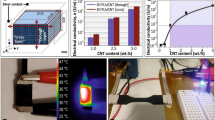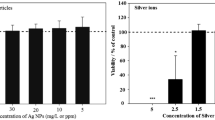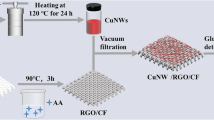Abstract
Colorimetric biosensors made by polydiacetylene nanofibers have been of great interest in developing novel strategies of rapid and in situ detection to bacterial infection that is a major concern for human fatalities around the world. Previous studies have focused on bacterial detection and the sensitivity of the detection that the PDA biosensors can offer. However, the selectivity of the detection to different bacterial strains has not been well understood. With the recent emergence of multiple drug-resistance bacterial strains, selective detection of bacteria demands more attention and cutting-edge tools. In this study, a polydiacetylene (PDA) nanofiber biosensor prepared via electrospinning was found effectively to offer selective detection of Gram-negative bacteria such as Escherichia coli and Pseudomonas aeruginosa via a rapid blue-to-red colorimetric change. The quantification of the colorimetric changes suggested that the biosensor selectivity was effective in identifying with Gram-negative bacteria over Gram-positive bacteria (Staphylococcus aureus). The selectivity was likely due to structural differences between Gram-positive bacteria and Gram-negative bacteria such as cell outer layer thickness, as well as different extracellular polymeric substances (EPS) released by different bacteria. In addition, the nanofiber biosensor demonstrated superior antibacterial properties that were evaluated using bacteria staining and electron microscopic techniques. A comprehensive analysis of the interaction between the PDA nanofibers and different bacteria was presented to provide insightful understanding of selective detection and antibacterial properties of the PDA nanofibers. The results suggested that PDA nanofibers have great potential in medical textiles, personal protective equipment, and other biomedical applications.
Graphical abstract









Similar content being viewed by others
References
The top 10 causes of death. Geneva: WHO. 2022. https://www.who.int/news-room/fact-sheets/detail/the-top-10-causes-of-death
Newborn mortality. Geneva: WHO. 2022. https://www.who.int/news-room/fact-sheets/detail/levels-and-trends-in-child-mortality-report-2021
Infectious Diseases Society of America (IDSA) (2011) Combating antimicrobial resistance: policy recommendations to save lives, clinical infectious diseases. Clin Infect Dis 52(5):S397–S428
Bartholomew JW, Mittwer T (1952) The gram stain. Bacteriol Rev 16(1):1–29
Smith AC, Hussey MA (2005) Gram stain protocols. Am Soc Microbiol 1:14
Abe R, Oda S, Sadahiro T, Nakamura M, Hirayama Y, Tateishi Y, Shinozaki K, Hirasawa H (2010) Gram-negative bacteremia induces greater magnitude of inflammatory response than Gram-positive bacteremia. Crit Care 14:1–7
Breijyeh Z, Jubeh B, Karaman R (2020) Resistance of Gram-negative bacteria to current antibacterial agents and approaches to resolve it. Molecules 26(6):1340
Singh A, Arya S, Glass N, Hanifi-Moghaddam P, Naidoo R, Szymanski CM, Tanha J, Evoy S (2010) Bacteriophage tailspike proteins as molecular probes for sensitive and selective bacterial detection. Biosens Bioelectron 26(1):131–138
Tokonami S, Nakadoi Y, Takahashi M, Ikemizu M, Kadoma T, Saimatsu K, Dung LQ, Shiigi H, Nagaoka T (2013) Label-free and selective bacteria detection using a film with transferred bacterial configuration. Anal Chem 85(10):4925–4929
Zhu H, Sikora U, Ozcan A (2012) Quantum dot enabled detection of Escherichia coli using a cell-phone. Analyst 137:2541–2544
Jijie R, Kahlouche K, Barras A, Yamakawa N, Bouckaert J, Gharbi T, Szunerits S, Boukherroub R (2018) Reduced graphene oxide/polyethylenimine based immunosensor for the selective and sensitive electrochemical detection of uropathogenic Escherichia coli. Sens Actuat B-Chem 260:255–263
Wu J, Wang R, Lu Y, Jia M, Yan J, Bian X (2019) Facile preparation of a bacteria imprinted artificial receptor for highly selective bacterial recognition and label-free impedimetric detection. Anal Chem 91(1):1027–1033
Suehiro J, Hamada R, Noutomi D, Shutou M, Hara M (2003) Selective detection of viable bacteria using dielectrophoretic impedance measurement method. J Electrostat 57(2):157–168
Shen H, Wang J, Liu H, Li Z, Jiang F, Wang FB, Yuan Q (2016) Rapid and selective detection of pathogenic bacteria in bloodstream infections with aptamer-based recognition. ACS Appl Mater Interfaces 8(30):19371–19378
Bhattacharjee A, Clark R, Gentry-Weeks C, Li YV (2020) A novel receptor-free polydiacetylene nanofiber biosensor for detecting E. coli via colorimetric changes. Mater Adv 1:3387–3397
Bhattacharjee A, Clark R, Gentry-Weeks C, Li YV (2020) Study of bacterial components activating a colorimetric transition in bacteria-detecting nanofiber wound dressing applications. In: International Textile and Apparel Association Annual Conference Proceedings, vol 77(1)
Currie S, Shariatzadeh F, Singh H, Logsetty S, Liu S (2020) Highly sensitive bacteria-responsive membranes consisting of core–shell polyurethane polyvinylpyrrolidone electrospun nanofibers for in situ detection of bacterial infections. ACS Appl Mater Interfaces 12(41):45859–45872
Yapor JP, Alharby A, Gentry-Weeks C, Reynolds MM, Alam A, Li YV (2017) Polydiacetylene nanofiber composites as a colorimetric sensor responding to Escherichia coli and pH. ACS Omega 2(10):7334–7342
Luo Y, Nartker S, Wiederoder M, Miller H, Hochhalter D, Drzal L, Alocilja E (2012) Novel biosensor based on electrospun nanofiber and magnetic nanoparticles for the detection of E coli O157:H7. IEEE T Nanotechnol 11(4):676–681
Song J, Lin X, Ee LY, Li SFY, Huang M (2022) A review on electrospinning as versatile supports for diverse nanofibers and their applications in environmental sensing. Adv Fiber Mater 5:1–32
Kang S, Zhao K, Yu D, Zheng X, Huang C (2022) Advances in biosensing and environmental monitoring based on electrospun nanofibers. Adv Fiber Mater 4:404–435
Valdez M, Gupta SK, Lozano K, Mao Y (2019) ForceSpun polydiacetylene nanofibers as colorimetric sensor for food spoilage detection. Sens Actuat B-Chem 297:126734
Vidal P, Martinez M, Hernandez C, Adhikari AR, Mao Y, Materon L, Lozano K (2019) Development of chromatic biosensor for quick bacterial detection based on polyvinyl butyrate-polydiacetylene nonwoven fiber composites. Eur Polym J 121:109284
Alam A, Yapor JP, Reynolds MM, Li YV (2016) Study of polydiacetylene-poly (ethylene oxide) electrospun fibers used as biosensors. Materials 9(3):202
Bhattacharjee A, Sabino RM, Gangwish J, Manivasagam VK, James S, Popat KC, Reynolds M, Li YV (2022) A novel colorimetric biosensor for detecting SARS-CoV-2 by utilizing the interaction between nucleocapsid antibody and spike proteins. In vitro Models 1:241–247
Chen L, Wu F, Li Y, Wang Y, Si L, Lee KI, Fei B (2018) Robust and elastic superhydrophobic breathable fibrous membrane with in situ grown hierarchical structures. J Membr Sci 547:93–98
Chae SK, Park H, Yoon J, Lee CH, Ahn DJ, Kim JM (2007) Polydiacetylene supramolecules in electrospun microfibers: fabrication, micropatterning, and sensor applications. Adv Mater 19(4):521–524
Eboigbodin K, Biggs C (2008) Characterization of the extracellular polymeric substances produced by Escherichia coli using infrared spectroscopic, proteomic, and aggregation studies. Biomacromol 9(2):686–695
Saadi N, Alotaibi K, Hassan L, Smith Q, Watanabe F, Khan AA, Karabacak T (2021) Enhancing the antibacterial efficacy of aluminum foil by nanostructuring its surface using hot water treatment. Nanotechnology 32(32):325103
Acknowledgements
This research did not receive any specific grant from funding agencies in the public, commercial, or not-for-profit sectors. The authors would like to acknowledge Analytical Resources Core (ARC) at the Colorado State University, Fort Collins, for helping in obtaining SEM images (RRID: SCR_021758).
Author information
Authors and Affiliations
Contributions
AB contributed to writing—original draft, review and editing, conceptualization, formal analysis, investigation, methodology, and validation. Emma Goodall was involved in investigation and validation. LZ and KCP contributed to writing—review and editing, conceptualization, project administration, formal analysis, and validation. YVL was involved in writing—review and editing, conceptualization, project administration, formal analysis, and validation.
Corresponding author
Ethics declarations
Conflict of interest
The authors have no competing interests to declare that are relevant to the content of this article.
Data availability statement
Not applicable.
Code availability statement
Not applicable.
Ethical approval
Not applicable.
Additional information
Handling Editor: Gregory Rutledge.
Publisher's Note
Springer Nature remains neutral with regard to jurisdictional claims in published maps and institutional affiliations.
Supplementary Information
Below is the link to the electronic supplementary material.
Rights and permissions
Springer Nature or its licensor (e.g. a society or other partner) holds exclusive rights to this article under a publishing agreement with the author(s) or other rightsholder(s); author self-archiving of the accepted manuscript version of this article is solely governed by the terms of such publishing agreement and applicable law.
About this article
Cite this article
Bhattacharjee, A., Goodall, E., Popat, K.C. et al. Selective detection of Gram-negative bacteria and antibacterial properties of colorimetric polydiacetylene nanofibers. J Mater Sci 58, 8261–8273 (2023). https://doi.org/10.1007/s10853-023-08550-z
Received:
Accepted:
Published:
Issue Date:
DOI: https://doi.org/10.1007/s10853-023-08550-z




